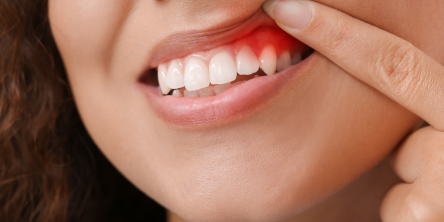How To Choose the Right Cosmetic Dental Procedure for Your Best Smile

Cosmetic dental procedures improve the appearance of your teeth, but they also affect how your bite functions and how well you can maintain oral hygiene. Some treatments reduce discomfort, protect weakened teeth, or make it easier to speak and eat with confidence. But with so many options available, it's not always easy to decide which treatment fits your goals, preferences, and needs.
Your decision should be based on factors like your current oral health, budget, long-term maintenance, and the root cause of your dental imperfections all come into play. This article breaks it down into practical steps to help you figure out which cosmetic dental option makes the most sense for your situation.
Start With a Professional Evaluation
Cosmetic dentists can give you insights that go beyond what you see in the mirror. Clinics like Innovation Dental provide consultations that consider the health and structure of your natural teeth, not just their appearance.
During an evaluation, your dentist checks for signs of gum disease, tooth decay, tooth sensitivity, and other underlying issues. These conditions must be addressed first before moving forward with any cosmetic procedure. Skipping this step risks worsening current problems and affecting the durability of future treatments.
Even if your teeth look healthy, there may be bite issues or early-stage wear that only a professional can identify. This helps prevent short-term fixes and guides you toward options with better longevity.
Match the Procedure to the Specific Issue
Each cosmetic procedure targets a specific problem, so it helps to identify exactly what you want to improve. Knowing the cause of the issue makes it easier to find the right solution.
- For discolored teeth: Teeth whitening works for most surface stains, especially those caused by food, drinks, or smoking. But deep stains from trauma or certain medications may require porcelain veneers instead.
- For chipped edges or small cracks: Dental bonding is usually the fastest and least invasive fix. It can reshape teeth and close small gaps between teeth during a single visit.
- For crooked teeth or gaps: Invisible aligners can gradually reposition misaligned teeth with less discomfort than traditional metal braces.
- For severe damage or worn enamel: Dental crowns are a better option when the entire surface of the tooth needs coverage and protection.
- For missing teeth: Dental implants offer a stable long-term solution that feels and functions like natural teeth. Partial dentures may be a more affordable option, but they require more upkeep and may not last as long.
Understanding which issue each procedure targets helps you avoid unnecessary or mismatched treatments.
Think About Longevity and Maintenance
Cosmetic procedures vary in how long they last and what kind of upkeep they require. Some treatments are designed to last for years with minimal maintenance, while others may need regular follow-up or replacement to stay effective.
Dental veneers and crowns are durable but not permanent. They typically need replacement after 10 to 15 years. Bonding costs less upfront but may chip or stain more easily, especially without proper care. Teeth whitening results can fade within months, depending on your diet and habits.
If you’re prone to grinding or clenching, some procedures, like veneers or crowns, might need reinforcement or extra protection. A nightguard can reduce wear, but this adds to the total maintenance plan.
Ask your dentist how each option holds up with your lifestyle. For example, if you're frequently exposed to cold foods or acidic drinks, you’ll need to avoid treatments that increase tooth sensitivity.
Evaluate the Procedure’s Impact on Your Oral Health
Some cosmetic treatments do more than improve appearance. They can support or, in some cases, compromise oral health depending on how they’re done.
Dental implants, for instance, help preserve jawbone density and prevent shifting from tooth loss. On the other hand, overly aggressive shaving of healthy teeth to fit veneers or crowns can lead to gum recession or sensitivity.
Also, placing materials over decayed or damaged enamel without cleaning out bacteria can trap infections and increase long-term risks. This is why cosmetic dentists must check for any signs of active issues before starting.
Each procedure should align with your current oral health status. If it doesn’t, you might end up trading cosmetic benefits for more frequent dental problems.
Weigh the Procedure Against Potential Risks
Every treatment has its trade-offs. Whitening can cause temporary discomfort, especially for people with existing sensitivity. Veneers and crowns require removing part of the enamel, which can’t be reversed. Implants, while stable, involve surgery and healing time.
Discuss potential risks honestly with your dentist. Ask questions like:
- How will this affect my natural appearance?
- What happens if the procedure doesn’t take as expected?
- Will this limit what I can eat or do during recovery?
Some patients who opt for artificial teeth attached to implants need time to adjust to normal activities like chewing or speaking clearly. Others find that minor procedures like bonding feel unfamiliar at first.
Knowing what to expect helps you prepare mentally and physically. It also reduces the chances of regret or needing additional treatments sooner than planned.
Consider Cost in the Context of Value
Cost shouldn’t be the only factor, but it’s part of the decision. The key is to weigh upfront costs against future benefits and maintenance needs.
Whitening and bonding are less expensive but often need touch-ups or replacements. Veneers and crowns cost more but last longer with the right care. Implants require the biggest initial investment, but they can replace missing teeth permanently and protect against bone loss, which cheaper alternatives to veneers or dentures can’t offer.
Before committing, ask for a cost breakdown, including potential follow-ups. Also, check if your dentist offers phased treatment. That allows you to address priorities first and plan other steps over time.
Match the Procedure to Your Lifestyle
If you travel often, a treatment that needs frequent check-ups may not be ideal. If your job involves speaking a lot, options that feel more natural may help you stay comfortable.
Someone with an active lifestyle might prefer invisible aligners to braces because they’re easier to remove for sports. Others might choose dental fillings or crowns over bonding for durability during heavy use.
Lifestyle habits, like smoking or drinking coffee, can also affect how long treatments stay effective. Some patients may need additional treatments to keep a beautiful smile, especially when dealing with deep stains or gum issues.
Be honest about your routine, eating habits, and level of commitment. Your lifestyle doesn’t need to change drastically, but the procedure should work with it.
Final Thoughts
Choosing a cosmetic procedure should be about improving your dental health in a way that fits your goals, lifestyle, and long-term comfort. A dentist can recommend treatments, but the final choice should be one that makes sense for you in terms of function, cost, and personal preference.
You don’t need to aim for perfection. Aim for a solution that supports healthy teeth, fits naturally with your appearance, and lets you feel good in your skin every day.
Similar Articles
Ever caught yourself hiding behind your hand during a good laugh? Or dodging the camera at family gatherings? Those small chips, stubborn stains, or awkward gaps in your teeth can chip away at your confidence year after year.
When most people think about straightening their teeth, they envision traditional metal braces. However, because of recent advances in orthodontics, there are now more discreet, pleasant, and efficient solutions available.
Healthy gums not only ensure a beautiful smile but are also essential for overall oral health. However, conditions often arise that require surgical intervention in addition to dental treatment.
A tight booking calendar, a last-minute casting call, and a grin that has to look flawless by Friday—life as a Harlem creative rarely leaves space for dental upgrades
Gingivitis is an inflammation of the gums caused by the accumulation of plaque and bacteria.
Curious about Invisalign but unsure if it's the appropriate treatment option for you? You are in the right place. We are the experts in clear aligner orthodontic systems
A missing tooth is not only an aesthetic problem but can also affect overall oral health.
A snow-white smile has been a symbol of health, self-confidence, and success. For this reason, teeth whitening is one of the most popular procedures in dentistry. But not everything is as simple as it might seem at first glance
In the age of social media, TikTok has quickly become a platform where trends are born and shared at lightning speed









